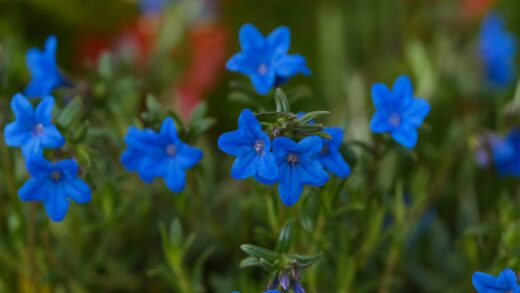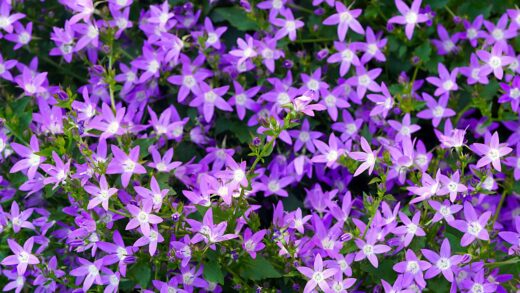The propagation of cosmos is a straightforward and highly gratifying process, primarily accomplished through the sowing of seeds. This ease of propagation is a key reason for their immense popularity among gardeners, as it allows for the creation of large, impactful drifts of color with minimal expense and effort. Whether sown directly into the garden bed or started indoors for an earlier display, cosmos seeds germinate readily and grow quickly, transforming from tiny seeds to towering, flowering plants in a single season. Understanding the simple requirements for successful germination and growth is the first step toward cultivating a breathtaking meadow of these cheerful, daisy-like flowers.
The timing of planting is crucial and depends on your local climate and last frost date. Cosmos are tender annuals, meaning they cannot tolerate frost, so it is essential to wait until all danger of frost has passed before planting them outdoors. For those who wish to get a head start on the season, starting seeds indoors provides a significant advantage, allowing you to have robust seedlings ready to transplant as soon as the weather is consistently warm. This method often results in earlier blooms and more established plants. Regardless of the method chosen, the fundamental principles of providing warmth, light, and well-drained soil remain the same.
The beauty of propagating cosmos from seed is not just in its simplicity but also in the sheer variety available. Seed catalogs and garden centers offer a dazzling array of cultivars, from the classic tall, airy types in shades of pink, white, and magenta to dwarf varieties perfect for containers and newer, more unusual colors like yellow, orange, and deep crimson. This accessibility allows gardeners to experiment with different color schemes and heights, designing bespoke planting plans that perfectly suit their aesthetic preferences and garden dimensions. The act of planting these seeds is an act of anticipation, a promise of the vibrant beauty to come.
Ultimately, the successful planting and propagation of cosmos hinge on providing them with a start that mimics their native environment: warmth, sun, and soil that is not overly enriched. These plants are survivors, programmed to grow and flower prolifically with minimal intervention. By following a few basic guidelines for sowing and transplanting, you can ensure high germination rates and the development of strong, healthy plants that will reward you with a continuous and delightful floral display from the height of summer until the very end of the growing season.
Propagation from seed
The primary and most effective method for propagating cosmos is by seed. Cosmos seeds are relatively large, dark, and needle-shaped, making them easy to handle for gardeners of all experience levels. One of the most appealing characteristics of these seeds is their high germination rate, meaning that a large percentage of the seeds you sow are likely to sprout into new plants, provided they are given the correct conditions. This reliability makes them an excellent choice for filling large garden spaces, creating wildflower meadows, or for children’s gardening projects.
More articles on this topic
Successful seed germination for cosmos depends on a few key environmental factors: warmth, moisture, and light. The seeds require a soil temperature of around 21-24 degrees Celsius to germinate efficiently. They also need consistent moisture during the germination period, but the soil should be damp, not waterlogged. Interestingly, cosmos seeds require light to germinate, so they should not be buried too deeply in the soil. A very light covering of soil or vermiculite, just enough to hold them in place, is sufficient.
You can determine the viability of your cosmos seeds before planting, especially if you have stored them for a year or more. A simple test involves placing a few seeds on a damp paper towel, enclosing it in a plastic bag to retain moisture, and keeping it in a warm place. Viable seeds will typically begin to sprout within a few days to a week. This can save you the time and effort of sowing seeds that are no longer capable of germinating and helps ensure a successful and evenly populated planting area.
The genetic diversity within cosmos seeds means that if you save seeds from your own garden, you may find some variation in the resulting plants the following year. While many will resemble the parent plant, cross-pollination between different cultivars can lead to new and surprising combinations of color and form. This can be a delightful aspect of growing cosmos, adding an element of unpredictability and discovery to your garden each season. For those who desire uniformity, purchasing new, certified seeds each year is the best approach.
Sowing seeds directly in the garden
Direct sowing, or planting seeds directly into the garden where they are to grow, is the easiest and most common method for cultivating cosmos. This approach eliminates the need for indoor seed-starting equipment and the process of transplanting, which can sometimes cause stress to the young plants. The key to success with direct sowing is timing. You must wait until all danger of frost has passed and the soil has had a chance to warm up to at least 18-20 degrees Celsius. Sowing too early in cold, damp soil can cause the seeds to rot before they have a chance to germinate.
More articles on this topic
To prepare the garden bed for direct sowing, first, clear the area of all weeds and debris. Then, use a rake or a garden fork to loosen the soil to a depth of about 15-20 centimeters, breaking up any large clumps. This creates a fine, crumbly tilth that is ideal for seed germination and root development. It is important not to add any rich compost or fertilizer to the bed, as cosmos flower best in soil that is not overly fertile. A smooth, level surface is all that is required for the next step.
When it comes to sowing the seeds, you can either scatter them evenly over the prepared area for a natural, meadow-like effect or plant them in more orderly rows. For a more controlled look, create shallow furrows about 1 centimeter deep, place the seeds inside, and then gently cover them. Because cosmos seeds need light to germinate, they should only be covered with a very thin layer of soil, no more than half a centimeter deep. After sowing, lightly tamp down the soil to ensure good seed-to-soil contact, which is essential for moisture absorption.
After sowing, the final step is to water the area gently but thoroughly. Use a watering can with a fine rose or a hose with a gentle spray setting to avoid dislodging the newly sown seeds. The soil should be kept consistently moist until the seedlings emerge, which typically takes between 7 and 21 days, depending on the temperature. Once the seedlings have developed a few sets of true leaves, you may need to thin them out to the recommended spacing for the specific variety you are growing, usually between 30 and 50 centimeters apart, to prevent overcrowding and ensure good air circulation.
Starting seeds indoors for an early start
For gardeners in regions with shorter growing seasons, starting cosmos seeds indoors is an excellent strategy to get a head start and ensure an earlier bloom time. This method allows you to begin the growing process four to six weeks before your average last frost date, while the weather outside is still too cold. By the time the danger of frost has passed, you will have strong, well-developed seedlings ready to be transplanted into the garden, giving them a significant advantage and leading to a longer flowering display throughout the summer.
To start seeds indoors, you will need seed trays or small pots with drainage holes, and a sterile seed-starting mix. Using a specialized seed-starting medium rather than garden soil is important, as it is finer, lighter, and free from pathogens that can harm delicate seedlings. Fill your containers with the mix, moisten it thoroughly, and then sow the seeds on the surface. As with direct sowing, cover the seeds with a very light dusting of the mix or some vermiculite, as they require light for germination.
After sowing, cover the trays or pots with a clear plastic dome or plastic wrap to create a mini-greenhouse effect. This helps to maintain the high humidity and consistent temperature necessary for germination. Place the containers in a warm location that receives bright, indirect light; a spot near a sunny window or under grow lights is ideal. The optimal temperature for germination is between 21 and 24 degrees Celsius. Check the soil daily to ensure it remains moist but not saturated, and remove the plastic cover for a short period each day to allow for air circulation.
Once the seedlings have germinated and developed their first set of true leaves (the second set of leaves to appear), it is time to remove the plastic cover permanently. If you have sown multiple seeds in one container, this is also the time to thin them to one seedling per pot or cell to prevent competition. Continue to provide the young plants with plenty of light, at least 14 to 16 hours a day if using grow lights, and water them as needed. This dedicated care in their early stages will produce strong, stocky plants that are well-prepared for the transition to the outdoor garden.
Transplanting seedlings and hardening off
The process of moving your indoor-grown cosmos seedlings into the outdoor garden requires a crucial transitional period known as “hardening off.” This step is vital for the survival and success of your plants. Seedlings that have been coddled in a controlled indoor environment are not prepared for the harsh conditions of the outdoors, including direct sunlight, wind, and temperature fluctuations. Abruptly moving them from indoors to the garden can cause transplant shock, which can stunt their growth or even kill them. Hardening off gradually acclimates the young plants to their new environment.
Begin the hardening-off process about one to two weeks before you plan to plant the seedlings in the garden. Start by placing the trays or pots in a sheltered, shady spot outdoors for just an hour or two on the first day. Choose a location that is protected from strong winds and direct, intense sunlight. Over the next seven to fourteen days, gradually increase the amount of time the seedlings spend outside each day, and slowly introduce them to more direct sunlight. Bring them back indoors each night or if the weather becomes particularly harsh.
When the seedlings have been fully hardened off and the danger of frost has passed, it is time to transplant them into their permanent home in the garden. Choose a cloudy day or plant them in the late afternoon to minimize the stress of the sun on the newly transplanted seedlings. Prepare the garden bed by ensuring the soil is loose and well-drained. Dig a hole for each seedling that is slightly larger than its root ball. Carefully remove the seedling from its pot, disturbing the roots as little as possible, and place it in the hole at the same depth it was growing in the container.
After placing the seedling in the hole, gently fill in the surrounding space with soil and lightly firm it down around the base of the plant to eliminate any large air pockets. Once all your seedlings are planted, water them thoroughly to help settle the soil and provide the roots with much-needed moisture. Keep a close eye on the transplants for the first week or two, providing consistent water as they establish themselves in their new location. This careful process of hardening off and transplanting ensures a smooth transition and sets the stage for a season of healthy growth and abundant flowers.
Vegetative propagation and saving seeds
While growing from seed is the most common method for propagating annual cosmos, it is important to understand the distinction between this and vegetative propagation. Vegetative propagation, such as taking cuttings, is not a typical or practical method for annuals like Cosmos bipinnatus. This is because these plants complete their entire life cycle, from seed to flower to seed, in a single growing season. Their genetic makeup is geared towards producing seeds for the next generation, and they do not have the perennial root systems or woody stems that are well-suited to propagation from cuttings.
In contrast, some species within the Cosmos genus, such as the chocolate cosmos (Cosmos atrosanguineus), are tender perennials that are propagated vegetatively from tubers. These plants do not typically produce viable seeds and must be propagated by dividing their tuberous roots. This highlights the importance of knowing the specific species you are working with. For the common garden cosmos, however, the focus of propagation remains squarely on the reliable and simple method of growing from seed, which is perfectly suited to its annual life cycle.
The most practical form of “propagation” for the home gardener, beyond sowing new seeds, is the act of saving your own seeds for the following year. This is a form of managed, generational propagation that is both sustainable and economical. To save seeds, allow some of the best-looking flowers on your healthiest plants to mature fully on the stem. As the season ends, these flower heads will dry out and the seeds within will ripen. Choosing seeds from your strongest and most beautiful plants allows you to selectively breed for desirable traits, gradually personalizing the cosmos population in your garden.
The process of saving, storing, and sowing these seeds completes the annual cycle of propagation. By engaging in this practice, you are actively participating in the life cycle of the plant, ensuring its continuation in your garden for years to come. It fosters a deeper connection with the plants you grow and provides a sense of self-sufficiency. Each spring, when you sow the seeds you collected the previous autumn, you are not just planting a flower; you are continuing a legacy that you have curated and nurtured yourself.


















